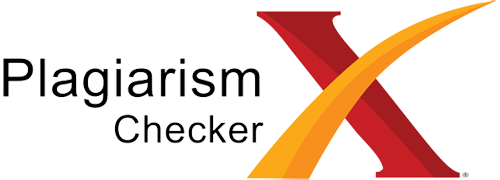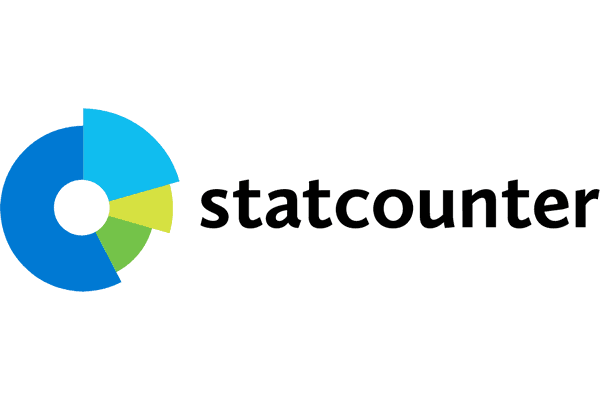ANALISIS KETERAMPILAN MAHASISWA PENDIDIKAN IPA DALAM MELAKUKAN PRAKTIKUM DAN BERKOLABORASI
DOI:
 https://doi.org/10.37859/eduteach.v3i2.3795
https://doi.org/10.37859/eduteach.v3i2.3795
Abstract
Prospective science teacher students must be able to carry out practicum well to deliver fun learning through experiments, as well as develop the ability to collaborate. The purpose of this study is to analyze student skills in conducting practicum and collaborating after COVID-19. This type of research is descriptive qualitative research and is carried out in the even semester of 2021-2022. Observations were made to obtain an overview of the skills of Ivet University Science Education students in carrying out practicum. The results showed that the average value of students in terms of (1) time effectiveness during practicum was 91.67; (2) skills in carrying out experiments of 87.50; (3) group dynamics of 81.25; (4) seriousness in observing the experiment, namely 77.08; (5) preparation and (6) cleanliness of practicum tools with a score of 75; (7) skills in the preparation of tools and materials, namely 70.83; and (8) leadership with a score of 66.67. Based on the results of the study, it can be concluded that students' skills in conducting practicum and collaborating are generally good, but leadership aspects and skills in preparing tools and materials still need to be improved.
Downloads
References
[2] Asrizal, A. Amran, A. Ananda, F. Festiyed, and R. Sumarmin, “The development of integrated science instructional materials to improve students’ digital literacy in scientific approach,” J. Pendidik. IPA Indones., vol. 7, no. 4, pp. 442–450, 2018, doi: 10.15294/jpii.v7i4.13613.
[3] Jumadi, W. Sunarno, and N. S. Aminah, “Pengembangan modul IPA berbasis keterampilan proses sains untuk meningkatkan kemampuan berpikir kritis peserta didik kelas VII SMP pada materi kalor,” INKUIRI J. Pendidik. IPA, vol. 7, no. 2, pp. 262–272, 2018, doi: 10.20961/inkuiri.v7i2.22986.
[4] T. W. Maduretno, Sarwanto, and W. Sunarno, “Pembelajaran IPA dengan pendekatan saintifik menggunakan model learning cycle dan discovery learning ditinjau dari aktivitas dan motivasi belajar siswa terhadap prestasi belajar,” J. Pendidik. Fis. dan Keilmuan, vol. 2, no. 1, pp. 1–11, 2016, doi: 10.25273/jpfk.v2i1.19.
[5] Y. Novianingsih, “Implikasi pemahaman guru tentang perbedaan individual peserta didik terhadap pembelajaran,” J. Ilmu Pendidik., 2019.
[6] I. Tivani and P. Paidi, “Pengembangan LKS biologi berbasis masalah untuk meningkatkan kemampuan pemecahan masalah dan karakter peduli lingkungan,” J. Inov. Pendidik. IPA, vol. 2, no. 1, pp. 35–45, 2016.
[7] I. Supena, A. Darmuki, and A. Hariyadi, “The influence of 4C (constructive, critical, creativity, collaborative) learning model on students’ learning outcomes,” Int. J. Instr., vol. 14, no. 3, pp. 873–892, 2021, doi: 10.29333/iji.2021.14351a.
[8] A. Lepiyanto, “Analisis Keterampilan Proses Sains Pada Pembelajaran Berbasis Praktikum,” BIOEDUKASI (Jurnal Pendidik. Biol., vol. 5, no. 2, p. 156, 2017, doi: 10.24127/bioedukasi.v5i2.795.
[9] A. F. Hindriana, “The development of biology practicum learning based on vee diagram for reducing student cognitive load,” J. Educ. Teach. Learn., vol. 1, no. 2, pp. 61–65, 2016.
[10] N. Suseno, R. Riswanto, A. R. Aththibby, D. H. Alarifin, and M. B. Salim, “Model Pembelajaran Perpaduan Sistem Daring dan Praktikum untuk Meningkatkan Kemampuan Kognitif dan Psikomotor,” J. Pendidik. Fis., vol. 9, no. 1, p. 42, 2021, doi: 10.24127/jpf.v9i1.3169.
[11] M. Listyawati, “Pengembangan perangkat pembelajaran IPA terpadu di SMP,” J. Innov. Sci. Educ., vol. 1, no. 1, pp. 61–69, 2012.
[12] L. S. Utami, Islahudin, Zulkarnain, and N. Rochyati, “Pendampingan Praktikum IPA Kelompok Siswa Belajar Luring,” J. Pengabdi. Masy. Berkemajuan, vol. 5, no. 1, pp. 846–849, 2021.
[13] A. Malik and M. Ubaidillah, “Multiple skill laboratory activities: How to improve students’ scientific communication and collaboration skills,” J. Pendidik. IPA Indones., vol. 10, no. 4, pp. 585–595, 2021, doi: 10.15294/jpii.v10i4.31442.
[14] I. Irwanto, E. Rohaeti, E. Widjajanti, and S. Suyanta, “Students’ science process skill and analytical thinking ability in chemistry learning,” AIP Conf. Proc., vol. 1868, no. August 2017, 2017, doi: 10.1063/1.4995100.
[15] D. Septiani, Y. Widiyawati, and I. Nurwahidah, “Pengembangan instrumen tes literasi sains PISA aspek menjelaskan fenomena ilmiah kelas VII,” Sci. Educ. Appl. J., vol. 1, no. 2, pp. 46–55, 2019, doi: 10.30736/seaj.v1i2.144.
[16] M. Nofiana and T. Julianto, “Upaya Peningkatan Literasi Sains Siswa Melalui Pembelajaran Berbasis Keunggulan Lokal,” Biosf. J. Tadris Biol., vol. 9, no. 1, p. 24, 2018, doi: 10.24042/biosf.v9i1.2876.
[17] R. U. Nurbaeti, “Pengembangan modul praktikum IPA berbasis kurikulum 2013 untuk mahasiswa pendidikan sekolah dasar,” J. Elem. Edukasia, vol. 3, no. 1, 2020, doi: 10.31949/jee.v3i1.2115.
[18] M. Nuswowati, E. Susilaningsih, N. Cola, and E. Purwanti, “The analysis of students’ practicum skills achievement in acid-base material,” J. Phys. Conf. Ser., vol. 1918, no. 3, pp. 1–6, 2021, doi: 10.1088/1742-6596/1918/3/032028.
[19] Y. Rachmawati et al., “Studi eksplorasi pembelajaran pendidikan IPA saat masa pandemi covid-19 di UIN Sunan Ampel Surabaya,” Indones. J. Sci. Learn., vol. 1, no. 1, pp. 32–36, 2020, doi: 10.15642/ijsl.v1i1.633.
[20] N. A. Handayani and J. Jumadi, “Analisis pembelajaran IPA secara daring pada masa pandemi covid-19,” J. Pendidik. Sains Indones., vol. 9, no. 2, pp. 217–233, 2021, doi: 10.24815/jpsi.v9i2.19033.
[21] D. Cranfield, A. Tick, I. M. Venter, R. J. Blignaut, and K. Renaud, “Higher education students’ perceptions of online learning during COVID-19—a comparative study,” Educ. Sci., vol. 11, no. 8, pp. 1–17, 2021, doi: 10.3390/educsci11080403.
[22] D. P. Anggrella, A. Rahmasiwi, and D. Purbowati, “Eksplorasi Kegiatan Praktikum IPA PGMI Selama Pandemi Covid-19,” SAP (Susunan Artik. Pendidikan), vol. 6, no. 1, 2021, doi: 10.30998/sap.v6i1.9612.
[23] A. Ekantini, “Efektivitas pembelajaran daring pada mata pelajaran IPA di masa pandemi covid-19: studi komparasi pembelajaran luring dan daring pada mata pelajaran IPA SMP,” J. Pendidik. Madrasah, vol. 5, no. 2, pp. 187–194, 2020, doi: 10.14421/jpm.2020.52-04.
[24] L. Khusnah, “Persepsi guru IPA SMP/MTs terhadap praktikum IPA selama pandemi COVID-19,” Sci. Educ. Appl. J., vol. 2, no. 2, pp. 112–118, 2020, doi: 10.30736/seaj.v2i2.291.
[25] E. D. Puspitasari and N. Febrianti, “Analisis keterampilan psikomotorik mahasiswa pada praktikum biokimia dan korelasinya dengan hasil belajar kognitif,” J. Pendidik. Biol., vol. 8, no. 1, pp. 31–38, 2018, doi: 10.24114/jpb.v8i1.11664.
[26] I. Yusuf and A. Asrifan, “Peningkatan aktivitas kolaborasi pembelajaran fisika melalui pendekatan STEM dengan purwarupa pada siswa kelas XI IPA SMAN 5 Yogyakarta,” Uniqbu J. Exact Sci., vol. 1, no. 3, pp. 32–48, 2020, doi: 10.47323/ujes.v1i3.68.
[27] K. A. Sari, Z. K. Prasetyo, and W. S. Wibowo, “Development of science student worksheet based on project based learning model to improve collaboration and communication skills of junior high school student,” J. Sci. Educ. Res., vol. 1, no. 1, 2017, doi: 10.21831/jser.v1i1.16178.
[28] H. Le, J. Janssen, and T. Wubbels, “Collaborative learning practices: teacher and student perceived obstacles to effective student collaboration,” Cambridge J. Educ., vol. 48, no. 1, pp. 103–122, 2018, doi: 10.1080/0305764X.2016.1259389.
[29] B. Liebech-Lien and E. Sjølie, “Teachers’ conceptions and uses of student collaboration in the classroom,” Educ. Res., vol. 63, no. 2, pp. 212–228, 2021, doi: 10.1080/00131881.2020.1839354.
[30] J. W. Hur, Y. W. Shen, and M. H. Cho, “Impact of intercultural online collaboration project for pre-service teachers,” Technol. Pedagog. Educ., vol. 29, no. 1, pp. 1–17, 2020, doi: 10.1080/1475939X.2020.1716841.
[31] R. Hamid, S. Baharom, N. Hamzah, W. H. W. Badaruzzaman, R. A. O. K. Rahmat, and M. RaihanTaha, “Assessment of psychomotor domain in materials technology laboratory work,” Procedia - Soc. Behav. Sci., vol. 56, no. Ictlhe, pp. 718–723, 2012, doi: 10.1016/j.sbspro.2012.09.708.
[32] G. Kasilingam, M. Ramalingam, and E. Chinnavan, “Assessment of learning domains to improve student’s learning in higher education,” J. Young Pharm., vol. 6, no. 1, pp. 27–33, 2014, doi: 10.5530/jyp.2014.1.5.
[33] A. Asrial, S. Zakariyya, D. A. Kurniawan, and R. Septiasari, “Hubungan kompetensi pedagogik dengan kompetensi IPA mahasiswa pendidikan guru sekolah dasar,” Pedagog. J. Pendidik., vol. 8, no. 2, p. 149, 2019, doi: 0.21070/pedagogia.v8i2.1872.
[34] I. M. A. Winangun, “Project based learning : strategi pelaksanaan praktikum IPA SD dimasa pandemi covid-19,” Edukasi J. Pendidik. Dasar, vol. 2, no. 1, pp. 11–20, 2021.
[35] D. S. Sari and M. N. Wulanda, “Pengembangan lembar kerja mahasiswa berbasis proyek dalam meningkatkan kemampuan berfikir kreatif mahasiswa,” Nat. J. Ilm. Pendidik. IPA, vol. 6, no. 1, pp. 20–33, 2019, doi: 10.30738/natural.v6i1.4073.
[36] Y. Suryaningsih, “Pembelajaran berbasis praktikum sebagai sarana siswa untuk berlatih menerapkan keterampilan proses sains dalam materi Biologi,” J. Bio Educ., vol. 2, no. 2, pp. 49–57, 2017.
[37] D. S. Asmorowati, S. Wardani, and F. W. Mahatmanti, “Analysis of student science process skills in the practicum of physical chemistry based on linguistic and interpersonal intelligence,” Int. J. Act. Learn., vol. 6, no. 1, pp. 34–40, 2021.
[38] R. Hung and U. A. Wati, “‘Digital home schooling’ during the pandemic: possibilities and challenges,” Knowl. Cult., vol. 8, no. 2, pp. 36–43, 2020.
[39] R. Diani, “Pengembangan Perangkat Pembelajaran Fisika Berbasis Pendidikan Karakter dengan Model Problem Based Instruction,” J. Ilm. Pendidik. Fis. Al-Biruni, vol. 4, no. 2, pp. 243–255, 2015, doi: 10.24042/jpifalbiruni.v4i2.96.
[40] S. Krumm, K. Terwiel, and G. Hertel, “Challenges in norm formation and adherence: The knowledge, skills, and ability requirements of virtual and traditional cross-cultural teams,” J. Pers. Psychol., vol. 12, pp. 33–44, 2013.











